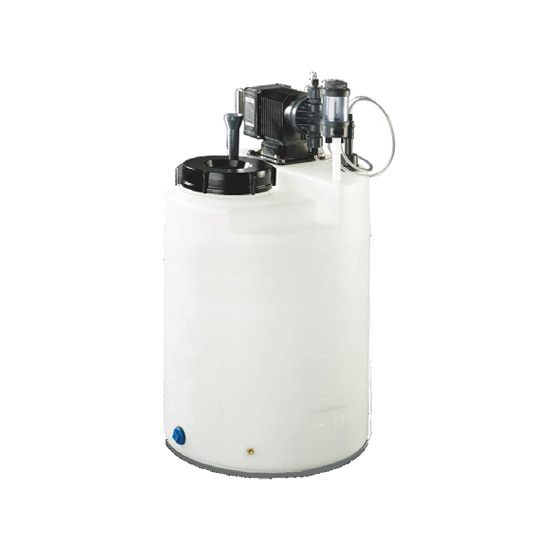แคตตาล็อกออนไลน์
Features:
- Fully adjustable output capacity from 0.12 - 12 m3/hr
- Manual function control for stroke rate & length
- Highly reliable timing circuit
- Thermally protected solenoid with autoreset
- Bleed valve assembly
- Plastic pvc head/fittings and polyethylene tank for a
- wide range of corrosion resistance to such
- Chemicals as mild acid, chlorine, and caustic solution
- Factory tested for insured quality
- 1 year warranty
How to fix Fouling of a Membrane
There are four types of fouling common to UF and RO membrane operations including particulate, biological, inorganic,and organic.
Particulate fouling is caused by suspended solids, colloids,and turbidity that can be educed by coagulation, sedimentation,clarification, and media filtration. The common cleaning method for particulate fouling is air scour and backwash.
Biological fouling is caused by the growth of microorganismsthat can be reduced by using in-line chemical feed of chlorine or biocide or by elimination of nutrients by using PAC, GAC,or coagulation. The common cleaning method for removal of biological fouling is Chemically Enhanced Backwash (CEB) withoxidizers or biocides (Cl2, H2O2, SBS).
Inorganic fouling is caused by the precipitation of inorganicson the membrane that an be reduced by using oxidation/ precip
itation and filtration as pretreatment to the UF or in some cases using low hardness water for the alkali chemically enhanced backwash. The common cleaning method for removal of inorganic fouling is chemically enhanced backwash with acid at pH 2 (HCl, H2SO4, Citric, Oxalic Acid).
Organic fouling is caused by organics adsorbing on the membrane (silt, organic acids, humus) that can be reduced by using PAC, GAC, or coagulation. The common cleaning method for removal of organic fouling is CEB with alkali at pH 12 (NaOH).
Material Construction:
- Pump Head: PVC
- Diaphragm: Teflon-faced
- O-Rings: Polyprel
- Balls: Ceramic
- Fittings: PVC
- Tubing: Clear PVC / White PE
- Tank / Cover: Polyethylene

โปรดขอรายละเอียดหรือติดต่อฝ่ายบริการลูกค้าหากต้องการข้อมูลเพิ่มเติม

